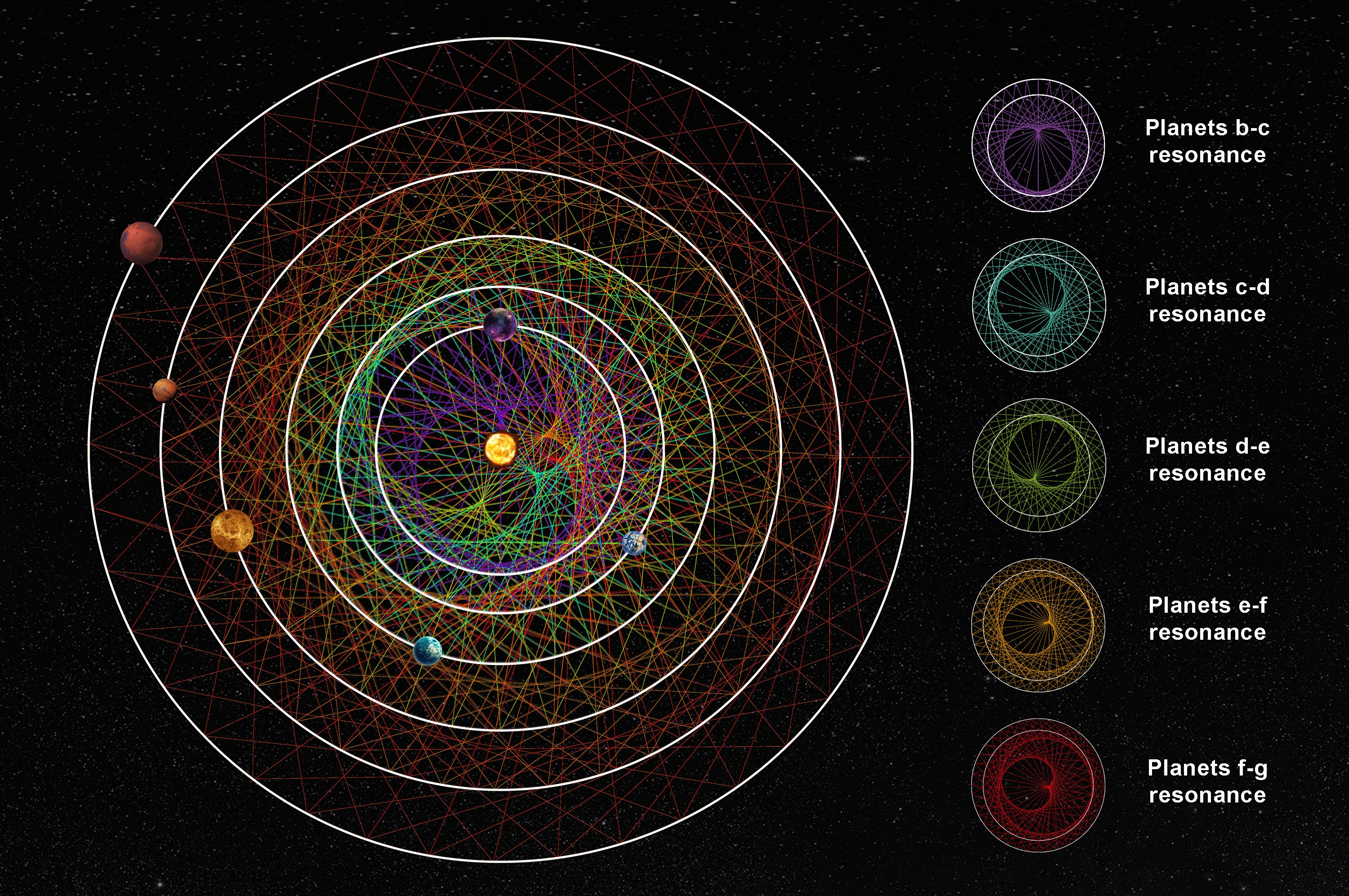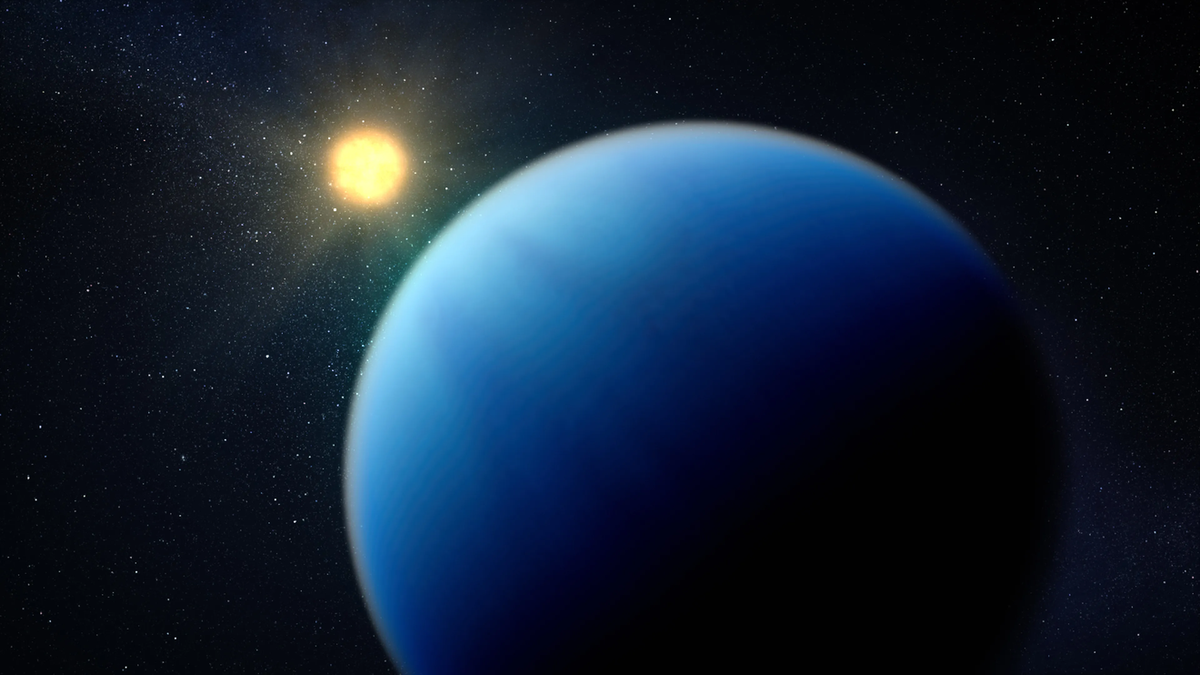Sub-Neptune planets that dance in time with the rest of their planetary systems are less dense than those that don’t, planetary scientists have found.
Though notably absent from the solar system, the most common planets in the Milky Way are known as “sub-Neptunes,” or worlds with sizes between those of Earth and the ice giant Neptune. It is estimated that between 30% and 50% of sun-like stars are orbited by at least one sub-Neptune — but despite these worlds’ ubiquity, scientists studying extrasolar planets, or exoplanets, have traditionally had difficulty measuring sub-Neptunes’ densities.
Depending on the techniques used for these measurements, sub-Neptunes seem to split into two distinct categories: “puffy” and “non-puffy.” Yet, the question has been whether there are actually two distinct populations of sub-Neptunes or whether these differences are the result of what method was used to measure densities. On that front, new research from the University of Geneva (UNIGE) and the University of Bern (UNIBE) suggests that there are indeed actually two physically different families of sub-Neptunes. And puffy sub-Neptunes are more likely to be in resonance with their planetary siblings.
Waltzing with planetary partners
Planets are said to be in resonance when, for instance, one planet completes one orbit in the same time it takes another planet to complete two orbits.
One extraordinary resonant planetary system recently discovered is HD 110067, located 100 light-years from Earth. The six sub-Neptune worlds in this system dance around each other in a precise cosmic waltz. The inner planet completes an orbit in 9.1 Earth days, the next planet out orbits in 13.6 days, the third in 20.5 days, the fourth in 30.8 days, the fifth in 41 days, and the outermost planet in 54.7 days.
Thus, for each orbit of the star the outer planet completes, the inner planet completes six orbits. That means these sub-Neptunes said to be in a 6:1 resonance. The other resonances between different pairs of planets in the HD 110067 system are 3:2, 3:2, 3:2, 4:3 and 4:3.
Related: Scientists find a surprise ingredient in exoplanet cake mix — sulfur dioxide
This rhythmic dance has existed around the bright orange star HD 110067 for around 4 billion years, about equal to the time the solar system has existed. As fascinating as it is, however, it doesn’t tell us why the sub-Neptunes in this system seem to be less dense.
The team behind this new research has proposed a few possible explanations for the lightness of resonant sub-Neptunes; the most probably appears to suggest the process is linked to how these were formed.

It’s possible, the team says, that all planetary systems converge toward a resonant chain during their early existence. However, they believe only 5% of systems can maintain this rhythm.
The breaking of the resonance chain can lead to a series of catastrophic events, with planets slamming together and often merging to become denser conglomerate worlds. This means resonant chain systems can also maintain their puffy sub-Neptunes, the team says, as collisions and mergers increase the density of the same planets in non-resonant systems.
“The numerical models of planetary system formation and evolution that we have developed at Bern over the last two decades reproduce exactly this trend: planets in resonance are less dense,” Yann Alibert, a professor at UNIBE’s Space Research and Planetary Sciences Division and member of the discovery team, said in a statement. “This study, moreover, confirms that most planetary systems have been the site of giant collisions, similar or even more violent than the one that gave rise to our moon.”
Sub-Neptune confusion and detection bias
To estimate the density of a planet, astronomers need two pieces of information: the planet’s mass and its radius. Two methods used to obtain mass measurements are the Transit Timing Variation (TTV), which only works if a planet crosses the face of its star from our vantage point on Earth, and the radial velocity method, which uses the gravitational tug a planet exerts on its star to measure mass.
“The TTV method involves measuring variations in transit timing. Gravitational interactions between planets in the same system will slightly modify the moment the planets pass in front of their star,” team member Jean-Baptiste Delisle, of the Astronomy Department of the UNIGE Faculty of Science, said in the statement. “The radial velocity method, on the other hand, involves measuring the variations in the star’s velocity induced by the presence of the planet around it.”
The TTV method, the scientists realized, tended to turn up sub-Neptune planets with less density than those measured with the radial velocity technique.
Performing a statistical analysis, the team found that the radial velocity method requires more time to detect large and low-mass planets, such as puffy sub-Neptunes. That means observations using radial velocity are more at risk of being interrupted before a planet’s mass is estimated. This results in a bias in favor of higher masses and densities for planets characterized by the radial velocity method, with less dense planets being excluded.
Further investigation showed that, not only was the TTV method more likely to pick up on less dense exoplanets, but the densities of these planets were also lower in resonant systems than their counterparts were in non-resonant systems — regardless of the method used to determine their mass.
With the existence of two distinct families of sub-Neptunes confirmed and the discovery of a link between puffy planets and resonant planetary systems, scientists are better positioned to understand the evolution of our galaxy’s most common planet type.
They may also soon be able to explain, at last, why our solar system lacks such a world.
The team’s research is published in the journal Astronomy & Astrophysics.

Daisy Hips is a science communicator who brings the wonders of the natural world to readers. Her articles explore breakthroughs in various scientific disciplines, from space exploration to environmental conservation. Daisy is also an advocate for science education and enjoys stargazing in her spare time.






